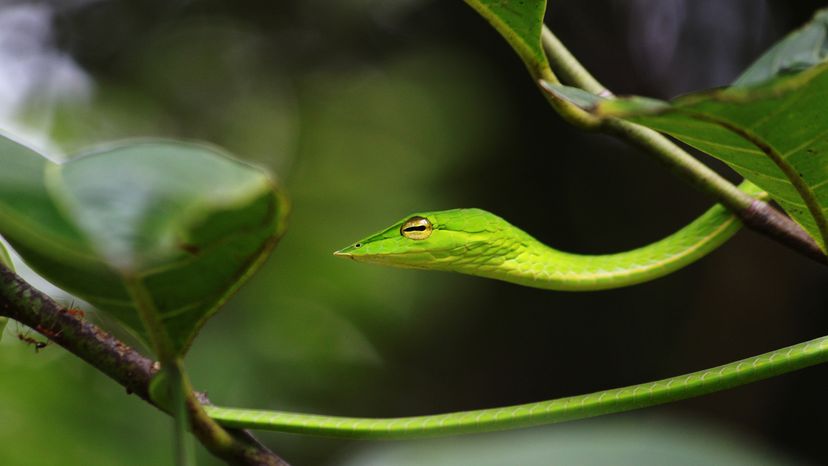There are several species of vine snakes found in the Americas. Here are a few common types.
1. Oxybelis fulgidus
Also known as the green vine snake, Oxybelis fulgidus is a slender, arboreal species native to Central and South America. Its bright green coloration helps it blend into foliage as it hunts birds, lizards and frogs in its forest habitat.
This is not the same species as another green vine snake, the Ahaetulla nasuta, which lives in Asia, including peninsular India.
2. Oxybelis aeneus
Commonly referred to as the brown vine snake, Oxybelis aeneus is a highly camouflaged snake that lives across the Americas, from the southern United States to northern South America. Its thin, elongated body and brown coloration make it nearly invisible in branches and dry leaves.
3. Oxybelis brevirostris
Known for its short snout, Oxybelis brevirostris is native to parts of Central America. It also goes by the names short-nosed vine snake and Cope's vine snake.
4. Oxybelis koehleri
This vine snake species inhabits tropical and subtropical forests. This species has a slim, elongated body and specialized hunting techniques, primarily targeting small vertebrates.
5. Oxybelis transandinus
Also called the Trans-Andean vine snake, this reptile inhabits the rainforests of Ecuador and Colombia. Its remarkable ability to remain hidden in dense vegetation makes it a skilled predator.
